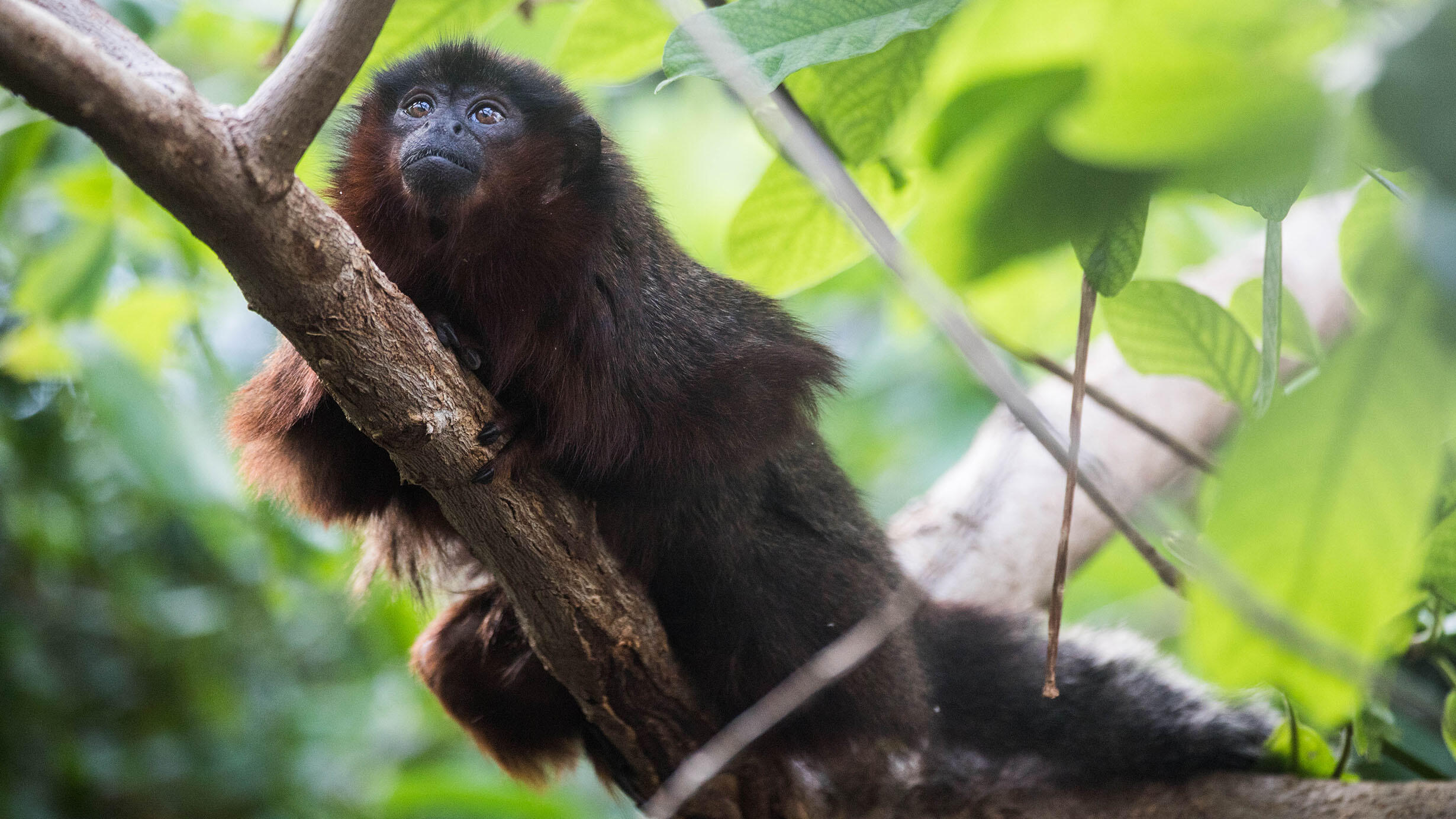Ancient DNA Reveals Extinct Jamaican Monkey Related to South American Species
by AMNH on
 Xenothrix mcgregori was closely related to South American’s titi monkeys, which include the red titi monkey, Callicebus cupreus, found in the Amazon of Brazil and Peru.
Xenothrix mcgregori was closely related to South American’s titi monkeys, which include the red titi monkey, Callicebus cupreus, found in the Amazon of Brazil and Peru.© Zoological Society of London
An unusual Jamaican monkey has received a firm place in the Tree of Life nearly 100 years after it was discovered by a Museum scientist in 1919.
New research based on ancient DNA shows that Xenothrix mcgregori, a slow-moving, tree-dwelling monkey that lived on the Caribbean island until it went extinct about a few hundred years ago, was most closely related to South America’s titi monkeys.
C. Chesek/©AMNH
Having made its way to Jamaica, probably on floating vegetation, Xenothrix’s bones reveal it underwent remarkable evolutionary change after arriving on the island.
“Xenothrix was regarded as the most enigmatic of all New World monkeys because of its strange combination of features,” says Ross MacPhee, a curator in the Museum’s Department of Mammalogy and a co-author of the new study. “Different investigators came to very different conclusions about its relationships as a result. Now we think we finally have a solid solution.”
In 1919, Museum mammalogist Harold Anthony found part of a fossilized primate jaw in a cave in Jamaica. He theorized that the monkey had been brought over with humans, rather than being native to the island, and brought the specimen back to the Museum.
"Xenothrix was regarded as the most enigmatic of all New World monkeys because of its strange combination of features."
The jaw was stored in the Museum’s collections until the early 1950s, when two graduate students rediscovered it and gave the odd primate a new genus, Xenothrix. But the students, Ernest Williams and Karl Koopman (who later became a Museum curator), remained circumspect of the primate’s true place in the evolutionary tree because the animal’s features are shared by primate groups.
© Zoological Society of London
Starting in the 1990s, MacPhee and his colleagues and students looked at the other Xenothrix skeletal remains discovered by Anthony in Jamaica. After close study, they cautiously put it in the titi monkey (Callicebinae) subfamily. MacPhee later made several expeditions to Jamaica to look for more remains and found some success on his most recent trip. Morphological studies, however, have not been conclusive.
"Evolution can act in unexpected ways in island environments."
The new research, published this week in the journal Proceedings of the National Academy of Sciences and carried out by scientists the Zoological Society of London (ZSL), London’s Natural History Museum, and the Museum, used ancient DNA extracted from Xenothrix’s bones to establish its placement.
“Ancient DNA indicates that the Jamaican monkey is really just a titi monkey, as we thought, with some unusual morphological features, and not a wholly distinct branch of New World monkey,” MacPhee says. “Evolution can act in unexpected ways in island environments, producing miniature elephants, gigantic birds, and sloth-like primates. Such examples put a very different spin on the old cliché that ‘anatomy is destiny.’”
The work also reveals that monkeys must have colonized the Caribbean islands more than once. Xenothrix’s likely arrived in Jamaica about 11 million years ago, possibly after being stranded on natural rafts of vegetation that were washed out of the mouths of large South American rivers. Many other animals, such as large rodents called hutias that still survive on some Caribbean islands today, probably colonized the region in the same way.
Other evidence indicates that Xenothrix died out around 1,500 CE, shortly after the arrival of Europeans in the Caribbean area.
Professor Samuel Turvey from ZSL, a co-author on the paper, says: “The extinction of Xenothrix, which evolved on an island without any native mammal predators, highlights the great vulnerability of unique island biodiversity in the face of human impacts.”